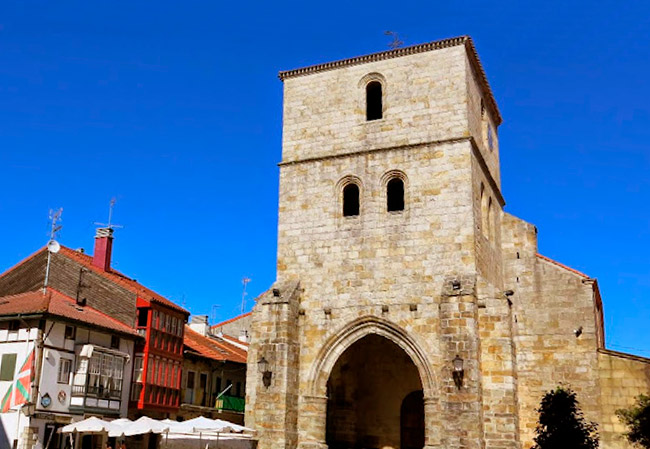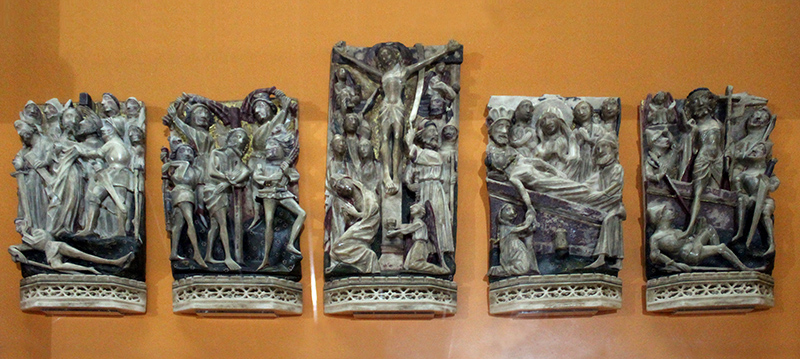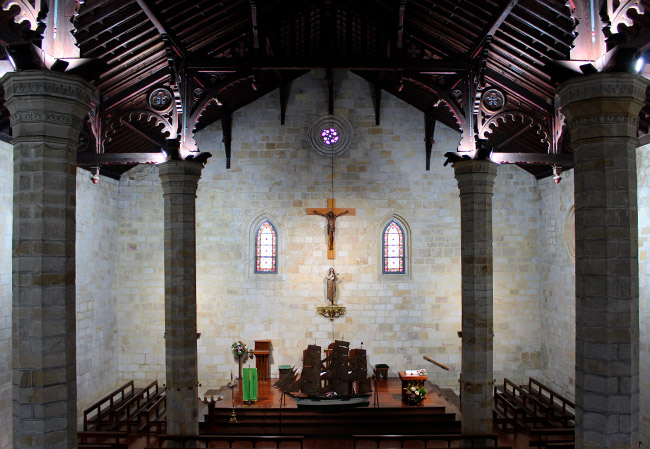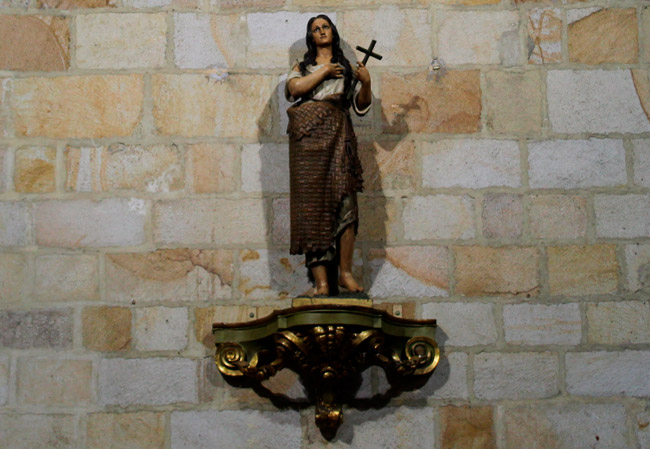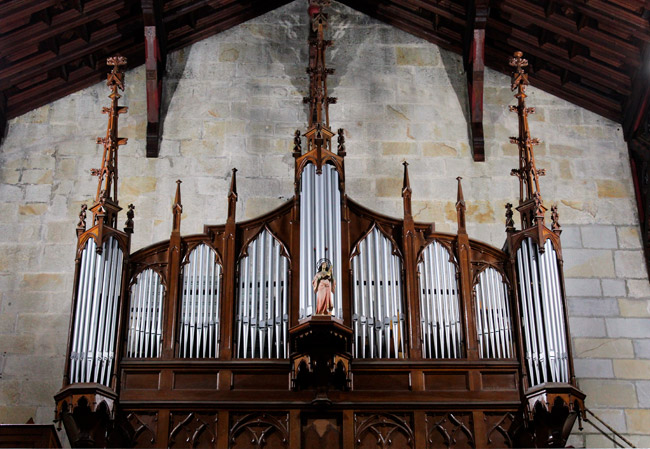Esta web utiliza cookies para que podamos ofrecerte la mejor experiencia de usuario posible. La información de las cookies se almacena en tu navegador y realiza funciones tales como reconocerte cuando vuelves a nuestra web o ayudar a nuestro equipo a comprender qué secciones de la web encuentras más interesantes y útiles.
Art and faith · Plentzia
SAINT MARY MAGDALENE
In the highest part of the town of Plentzia, dominating its historic centre and presiding over a square in which a marked maritime character is still preserved, stands the Church of Saint Mary Magdalene. You have arrived at it following a spiritual search, searching family traditions or simply attracted by the beautiful places that surround us.
Welcome. We invite you to visit this magnificent temple built by the town of Plentzia, people of extraordinary faith and great devotion to Magdalene, patron saint of the town. Before delving into this place full of art and spirituality, we will tell you a little history.
On October 5, 1299, the Lord of Biscay, Don Diego Lope de Haro founded the town of Plentzia, originally Plasencia de Butron, to promote the primitive foundation made in 1236 by his grandfather Don Lope de Haro. Subsequent lords of Biscay and kings of Castile confirmed the privileges of the town. In the founding document, this seafaring and fishing village was already recognized as an area for whaling since its origins. Created at the beginning of the 16th century, the «Brotherhood of Seafarers of Plentzia», which also brought together sailors from Barrika, Sopela, Lemoiz and Gorliz, governed everything related to trade, fishing and navigation. Many sailors from Plentzia were enrolled in boats from other ports.
Built on a previous temple, its construction is not known exactly. However, certain references to the construction of the tower place its construction around 1522. The first decades of the 16th century were times of prosperity, for which it was necessary to build a larger temple and thus meet the spiritual needs of the neighbours of the village. The sobriety of the aforementioned tower stands out, which has a past of a defensive nature with lookout functions over the route of the estuary.
“Come to me, all of you who are tired from carrying heavy loads, and I will give you rest. Take my yoke and put it on you, and learn from me, because I am gentle and humble in spirit; and you will find rest. For the yoke I will give you is easy, and the load I will put on you is light.”
Matthew 11, 28-30
After knowing these historical data, access the sacred enclosure. As you can see, it is an austere Gothic church of the sailor type, of the typology of «Church of hall» or hallenkirche. It has a rectangular floor plan, a straight apse and three naves, the central one wider than the lateral ones. Its roof stands out with a magnificent wooden framework, unique in Biscay. Six slender octagonal pillars with capitals decorated with mouldings, circles and saw teeth support the roof. The building is set in stone, which gives it the appearance of fortified architecture.
You are at the back of the temple. We invite you to begin your visit by slowly walking down the central corridor until you reach the head of the temple. Under the wooden choir, you can see the reproductions of the Passion Polyptych, from the Nottingham workshops. They are extraordinary alabaster bas-reliefs from the transition from Gothic to Renaissance dated between 1440 and 1480. Different scenes of the Lord’s Passion; the Arrest, the Flagellation, the Crucifixion, the Holy Burial and the Resurrection, make it one of the most impressive and striking ensembles of its style in the entire country.
“For God loved the world so much that he gave his only Son, so that everyone who believes in him may not die but have eternal life”
John 3, 16
Let’s continue our visit. Surely the boat suspended from the ceiling has caught your attention. It is the model of a ship, a sailor votive offering, which in the past was given as an offering to thank for favours granted. To your left, in the nave of the Gospel, you can see an imposing Recumbent Christ. Above it, on a wooden panel, you can see the 14 crosses of the XIV stations of this original VIA CRUCIS. On many occasions it seems that accompanying Jesus in his Passion and Death ends in the tomb, and we forget that on the third day Christ rose from the dead and is alive among us. VIA LUCIS. Next is the carving of Saint Antoninus of Pamiers, patron saint of Plentzia. Every September 2, the patron saint festivities are celebrated in his honour.
Continue to the altar where there is a unique shell-shaped baptismal font. For generations, the children of Plentzia have been baptised there. Baptism is the foundation of the entire Christian life, the gateway to life in the Spirit and the gateway to the rest of the sacraments. By the Baptism that is received here we are freed from sin, regenerated as children of God, and incorporated into his Church.
“I am telling you the truth: no one can see the Kingdom of God without being born again”
John 3, 5
On the left side of the head of the temple we can see the carving of the Our Lady of Mount Carmel, patron saint of fishermen and sailors. She is invoked to protect them from shipwrecks and storms on the high seas. On the right, a curious carving of the Apostle Saint Peter, accompanied by a rooster, cries for having renounced his Lord. Saint Peter is also the patron saint of sailors and fishermen, which reminds us of the remote dedication of this town to the sea.
After a little while the men standing there came to Peter. “Of course you are one of them,” they said. “After all, the way you speak gives you away!” Then Peter said, “I swear that I am telling the truth! May God punish me if I am not! I do not know that man!” Just then a rooster crowed, and Peter remembered what Jesus had told him: “Before the rooster crows, you will say three times that you do not know me.” He went out and wept bitterly.
Matthew 26, 73-75
On the central base there is a delicate carving of the penitent Mary Magdalene. In her left hand she holds a small cross, a symbol of penance. Saint Mary Magdalene is a great example for all of us. She was not paralysed by her past sins or human opinions. She wholeheartedly believed in her Lord, and became an icon of conversion and total surrender. At the top of the wall we can see an imposing Crucified Christ. On the cross Jesus freed us from sin and death by giving his life for us and rising on the third day. The Magdalene was the first person to see the Risen Jesus on Easter Sunday morning. And since that day he is still alive among us.
We finish our visit in which we have combined art and faith. We hope your visit has been pleasant. Before leaving the temple, we invite you to have a few moments of recollection and prayer, praise and accompany the Lord in his Eucharistic presence in the Tabernacle, the greatest treasure of this temple.
“Early on Sunday morning, while it was still dark, Mary Magdalene went to the tomb and saw that the stone had been taken away from the entrance”
John 20, 1
GOSPEL
I SEARCHED
SONG OF SONGS 3, 1-4
VIRTUAL VISIT
MAKE YOUR CONTRIBUTION
“For now there are faith, hope, and love. But of these three, the greatest is LOVE”
(1 Cor. 13, 13)

